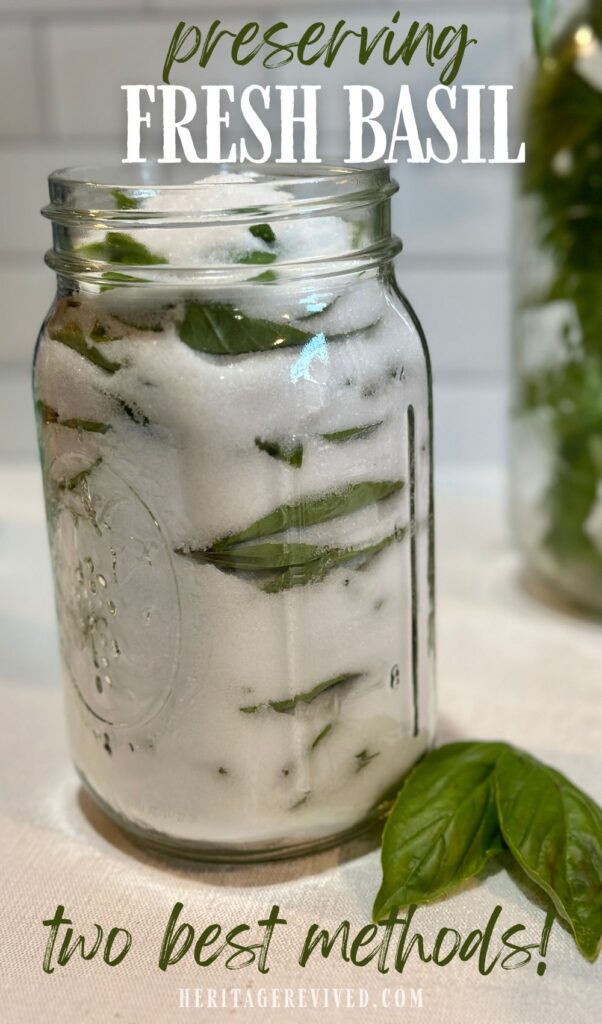When faced with a bumper crop, try these two easy methods of preserving basil for winter.
Basil, in my book, is nearly synonymous with summer time.
It’s one of my favorite, easy-to-grow herbs. Not to mention it’s versatile and fragrant, and just beautiful in the garden.
The last few years, I grew basil in between nearly all of my 40-ish tomato plants.
I do think it helped with pest control- mostly anecdotally. Because this year, I only grew a handful of basil plants throughout the garden, and my tomatoes did not seem to thrive nearly as much as in the past.
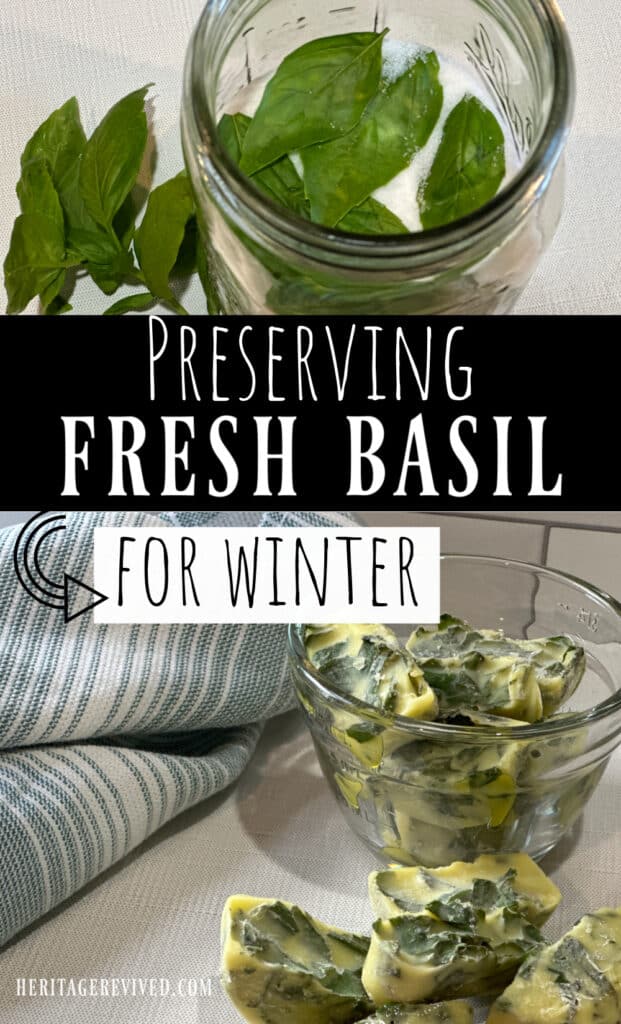
But even this year, those few plants produced a ton of basil, long into early fall. And for various reasons, I had little time to process it all.
Hence, the need for some simple preservation.
This site contains affiliate links to products. As an Amazon associate, I earn from qualifying purchases. Please read my disclosure for more info.
More reasons to love Basil (and make it last)
In addition to deterring pests and making pesto, basil has many other perks. It really is one herb you should plant every year.
Here are a few reasons why:
- It can deepen the flavor of your tomatoes as a companion plant
- It can thrive even in dry spells
- It can improve soil health
- It’s high in antioxidants, magnesium and vitamins
- It has pain-reducing and fever-reducing properties and can boost the immune system
- It has antibacterial and antimicrobial properties (great for DIY cleaners)
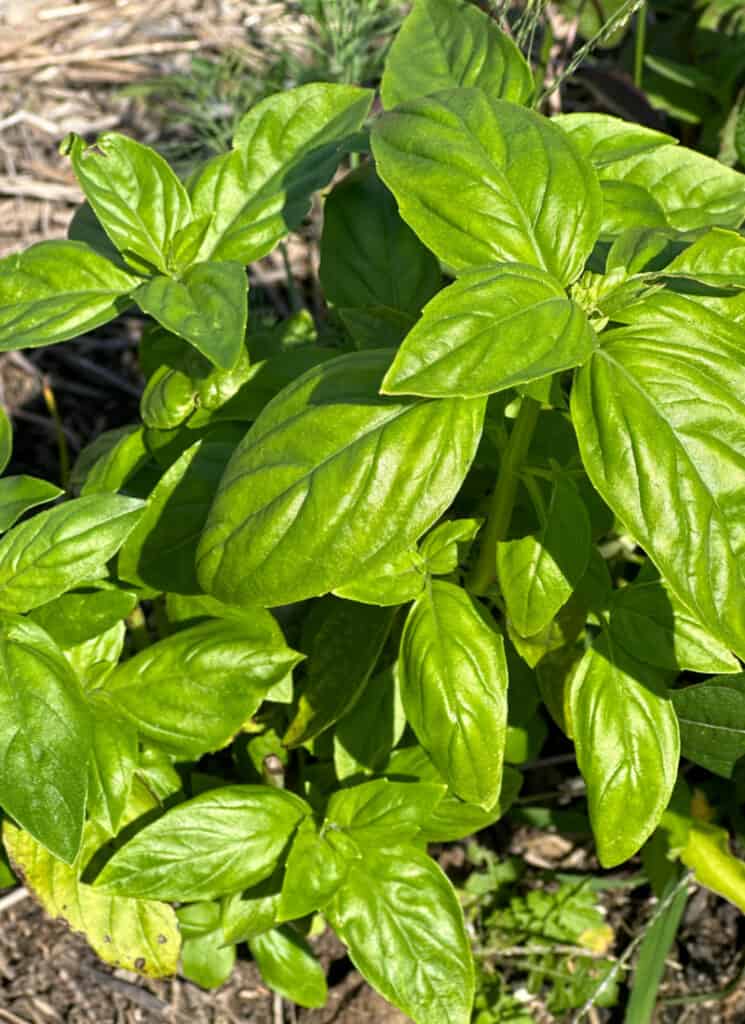
Problems with preserving garden basil
Most people like to dry basil in a dehydrator. That’s the usual way I go about preserving basil for winter, too.
But it can be a little tricky. Basil leaves can quickly oxidize and turn a dark color, similar to apples after you cut them up.
I’ve found blackened basil leaves that turned overnight in the refrigerator, after picking them fresh the previous day.
And since I have to wash basil before dehydrating it (or doing anything with it)- it can mean that even after carefully drying it, having that exposure to moisture and air can even turn basil leaves dark in the dehydrator before it fully dries.
Sometimes I’ll get a decent batch from the dehydrator, and sometimes I lose a lot of basil. It’s a toss up.
Preserving basil for winter, without a dehydrator
As I started reading about new ways to make basil last longer, I thought about how the pioneers salt-cured pork, for instance.
Salt has been long known for its preservation qualities, as evidenced in the Bible (Matthew 5:13, for example).
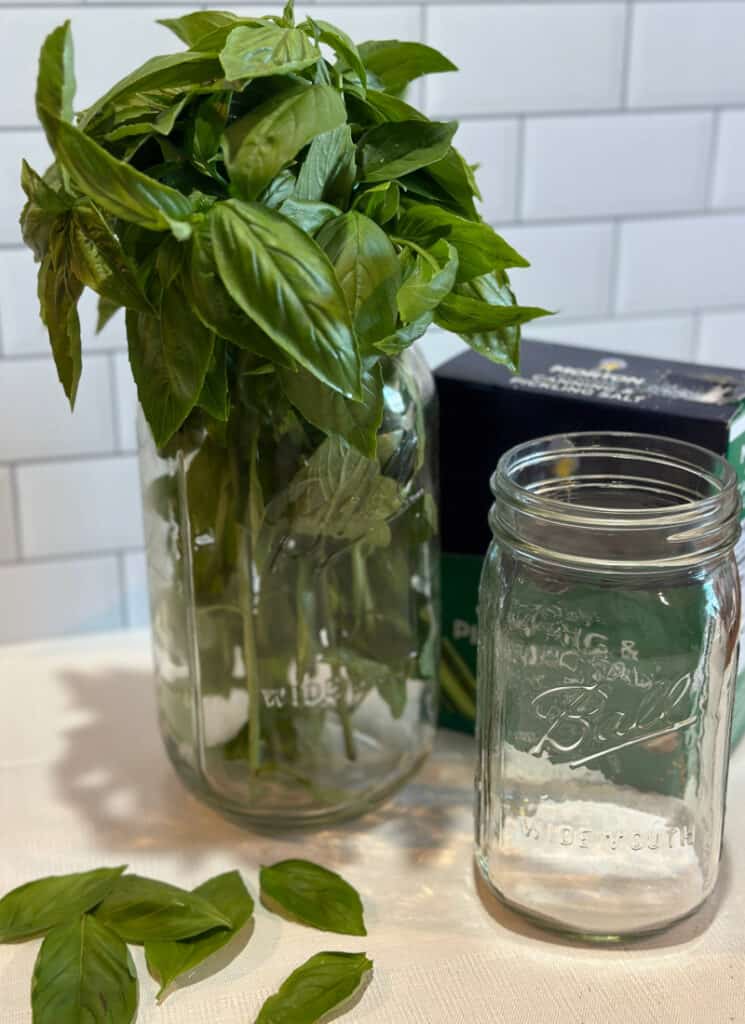
And then I remembered a food preservation book I had which discussed how in Italy, nearly everyone’s grandma still preserves sun-dried tomatoes and a variety of other things – in olive oil.

So, salt and oil were two agents I was curious about trying with my basil this year.
If you struggle with the time it takes to dehydrate a large batch of basil, or with leaves turning black before you can use your fresh basil- you might want to try this, too.
Preserving basil in salt
This is hands-down the easiest thing you can do to make your basil last longer in the refrigerator.
All you need is a glass mason jar and some salt.
You will want to use the same kind of salt you would use for canning. Basically, any salt without iodine such as kosher salt, sea salt, pickling salt, etc.
Avoid using iodized salt as the iodine and other additives can break down over time, causing your basil to turn dark. Which is what we’re trying to avoid!
Steps for preserving basil in salt
First, wash and carefully dry your basil. I like to blot the leaves with a kitchen towel to quickly dry them. If you let them air-dry, they may oxidize while you wait.
Then add a layer of salt to the bottom of your jar, alternating with one layer of basil at a time.
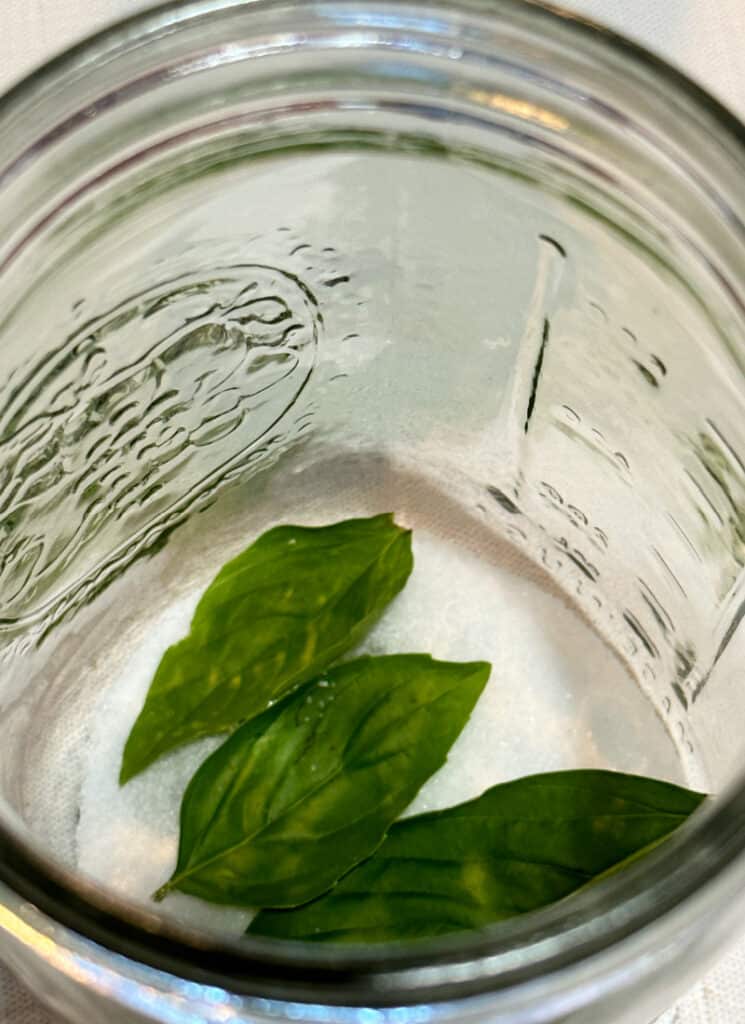
You just need enough salt to create a barrier between your layers of basil.
Make sure your top layer of basil is completely covered by salt, and fill up your jar as much as possible.
Add a tight lid and refrigerate. It should last several months in the fridge.
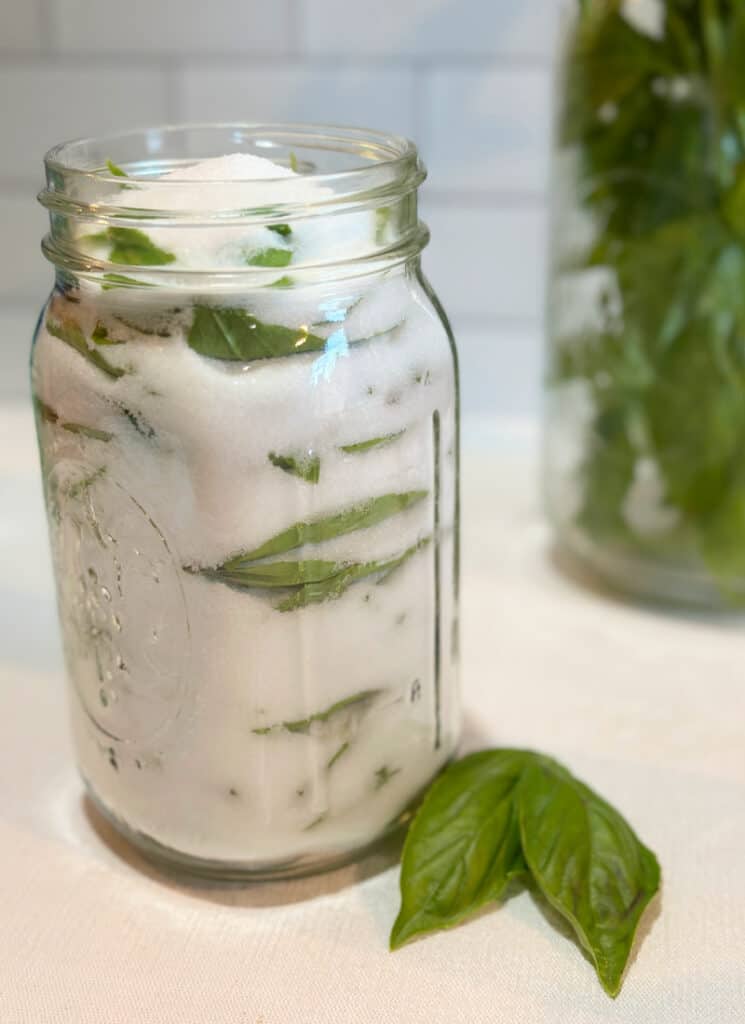
Simply dust off your basil leaves and use as you would normally use in any recipe with fresh basil.
Preserving basil in oil
If you’ve tried to freeze basil before, you know that it will turn dark quickly- just as it does in the refrigerator after a few days.
But if you insulate it in oil, it can last for many months.
Steps for preserving basil in oil
I prefer to use extra virgin olive oil for preserving basil, as this is what I would use for recipes involving oil and basil (such as pesto, or in pasta sauce).
For freezing, you will need some ice cube trays. Silicone trays are very easy to work with, if you have those.
First, wash and dry the basil leaves and carefully blot dry with a towel.
Then, roll them up in bunches and finely shred them as you would with shredding lettuce or spinach. Try to cut the strips into shorter pieces, to make them fit in the ice cube trays.
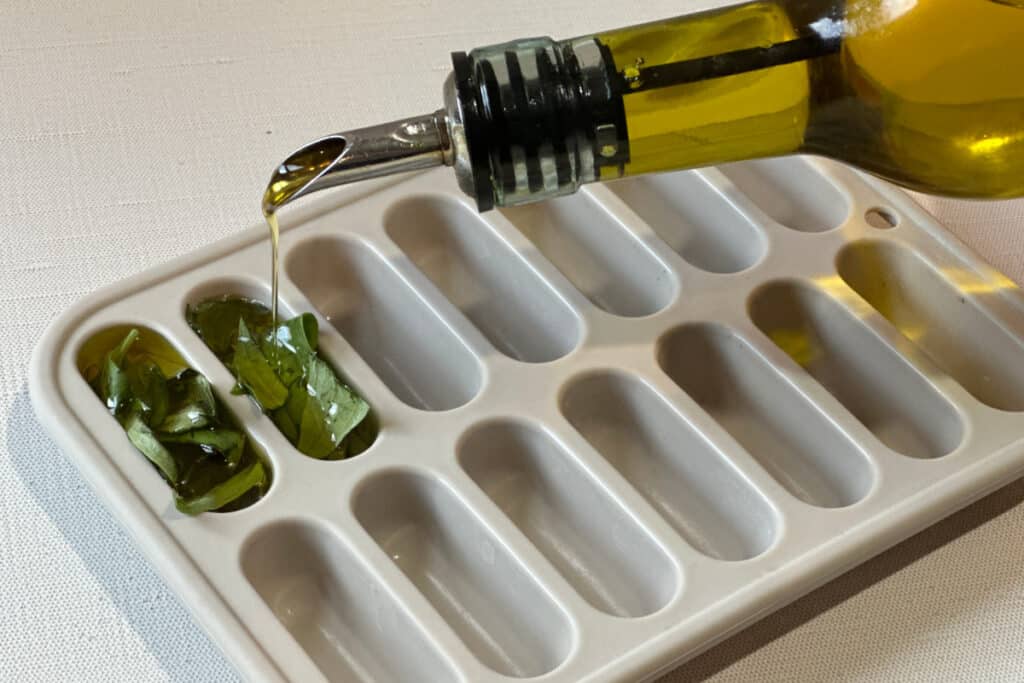
Then drizzle enough olive oil on top to cover the basil. Use a fork to press the leaves down into the oil as you go, and add as much basil as you can to each slot.
Freeze; and then pop your basil-cubes into a ziplock freezer bag, or vacuum sealed bag.

Having these in small portions makes them very easy to add whatever amount you need to recipes.
Bonus idea for preserving basil for winter
Basil is an herb you can grow in your kitchen window. But instead of starting from scratch, you can simply transplant some of your basil from the garden.
Use a clean container about twice the size of the root ball of your plant.
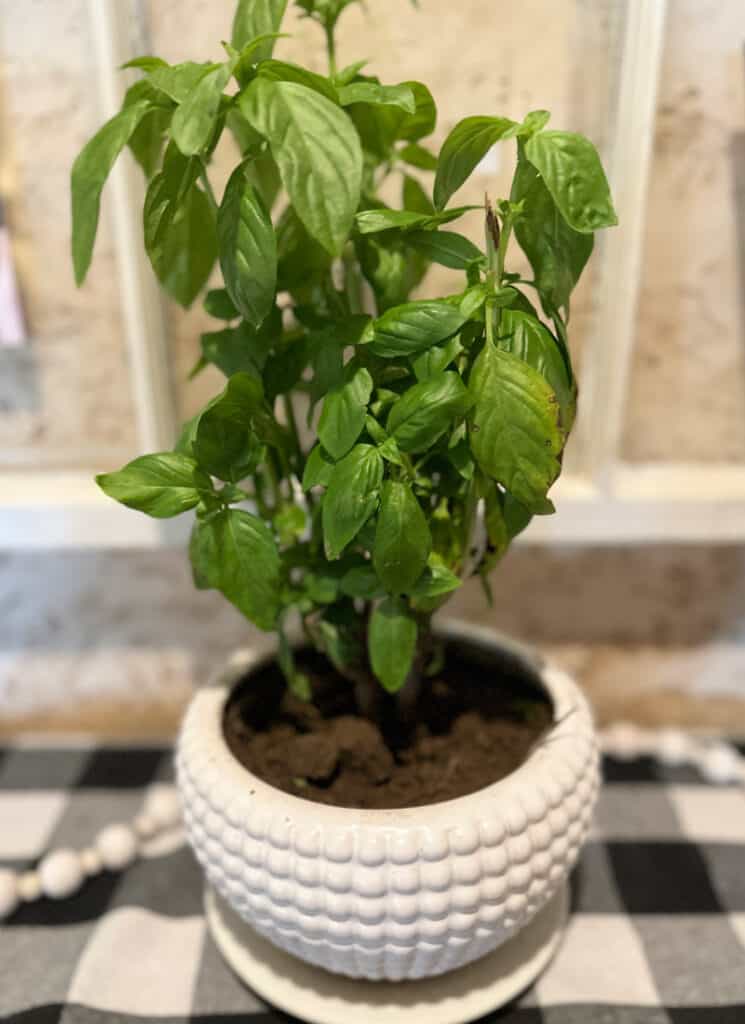
It won’t last forever, but it will give you some fresh basil for a while longer- without having to do much at all.
And, you get to hold on to a piece of summer while garden clean-up commences.
You might also like:
Preserving vegetables (beyond the fridge and freezer)
Tomato Sauce canning recipe: step by step
What to plant in late summer for a second harvest
Starting seeds indoors: A guide for beginners
